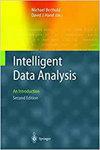Robust partial face recognition using multi-label attributes
IF 0.8
4区 计算机科学
Q4 COMPUTER SCIENCE, ARTIFICIAL INTELLIGENCE
引用次数: 0
Abstract
Partial face recognition (PFR) is challenging as the appearance of the face changes significantly with occlusion. In particular, these occlusions can be due to any item and may appear in any position that seriously hinders the extraction of discriminative features. Existing methods deal with PFR either by training a deep model with existing face databases containing limited occlusion types or by extracting un-occluded features directly from face regions without occlusions. Limited training data (i.e., occlusion type and diversity) can not cover the real-occlusion situations, and thus training-based methods can not learn occlusion robust discriminative features. The performance of occlusion region-based method is bounded by occlusion detection. Different from limited training data and occlusion region-based methods, we propose to use multi-label attributes for Partial Face Recognition (Attr4PFR). A novel data augmentation is proposed to solve limited training data and generate occlusion attributes. Apart from occlusion attributes, we also include soft biometric attributes and semantic attributes to explore more rich attributes to combat the loss caused by occlusions. To train our Attr4PFR, we propose an implicit attributes loss combined with a softmax loss to enforce Attr4PFR to learn discriminative features. As multi-label attributes are our auxiliary signal in the training phase, we do not need them in the inference. Extensive experiments on public benchmark AR and IJB-C databases show our method is 3% and 2.3% improvement compared to the state-of-the-art.使用多标签属性进行稳健的部分人脸识别
局部人脸识别(PFR)是一项具有挑战性的工作,因为人脸的外观会因遮挡而发生显著变化。特别是,这些遮挡可能是由任何物品造成的,也可能出现在任何位置,这严重阻碍了识别特征的提取。处理 PFR 的现有方法要么是使用包含有限遮挡类型的现有人脸数据库训练深度模型,要么是直接从无遮挡的人脸区域提取未遮挡特征。有限的训练数据(即闭塞类型和多样性)无法覆盖真实的闭塞情况,因此基于训练的方法无法学习到闭塞的鲁棒判别特征。基于闭塞区域的方法的性能受到闭塞检测的限制。与有限的训练数据和基于遮挡区域的方法不同,我们建议使用多标签属性进行部分人脸识别(Attr4PFR)。我们提出了一种新颖的数据增强方法来解决训练数据有限的问题,并生成闭塞属性。除了遮挡属性外,我们还加入了软生物识别属性和语义属性,以探索更丰富的属性来应对遮挡造成的损失。为了训练我们的 Attr4PFR,我们提出了隐式属性损失与软最大损失相结合的方法,以强制 Attr4PFR 学习判别特征。由于多标签属性是我们在训练阶段的辅助信号,因此我们在推理中不需要它们。在公共基准 AR 和 IJB-C 数据库上进行的大量实验表明,我们的方法比最先进的方法分别提高了 3% 和 2.3%。
本文章由计算机程序翻译,如有差异,请以英文原文为准。
求助全文
约1分钟内获得全文
求助全文
来源期刊

Intelligent Data Analysis
工程技术-计算机:人工智能
CiteScore
2.20
自引率
5.90%
发文量
85
审稿时长
3.3 months
期刊介绍:
Intelligent Data Analysis provides a forum for the examination of issues related to the research and applications of Artificial Intelligence techniques in data analysis across a variety of disciplines. These techniques include (but are not limited to): all areas of data visualization, data pre-processing (fusion, editing, transformation, filtering, sampling), data engineering, database mining techniques, tools and applications, use of domain knowledge in data analysis, big data applications, evolutionary algorithms, machine learning, neural nets, fuzzy logic, statistical pattern recognition, knowledge filtering, and post-processing. In particular, papers are preferred that discuss development of new AI related data analysis architectures, methodologies, and techniques and their applications to various domains.
 求助内容:
求助内容: 应助结果提醒方式:
应助结果提醒方式:


